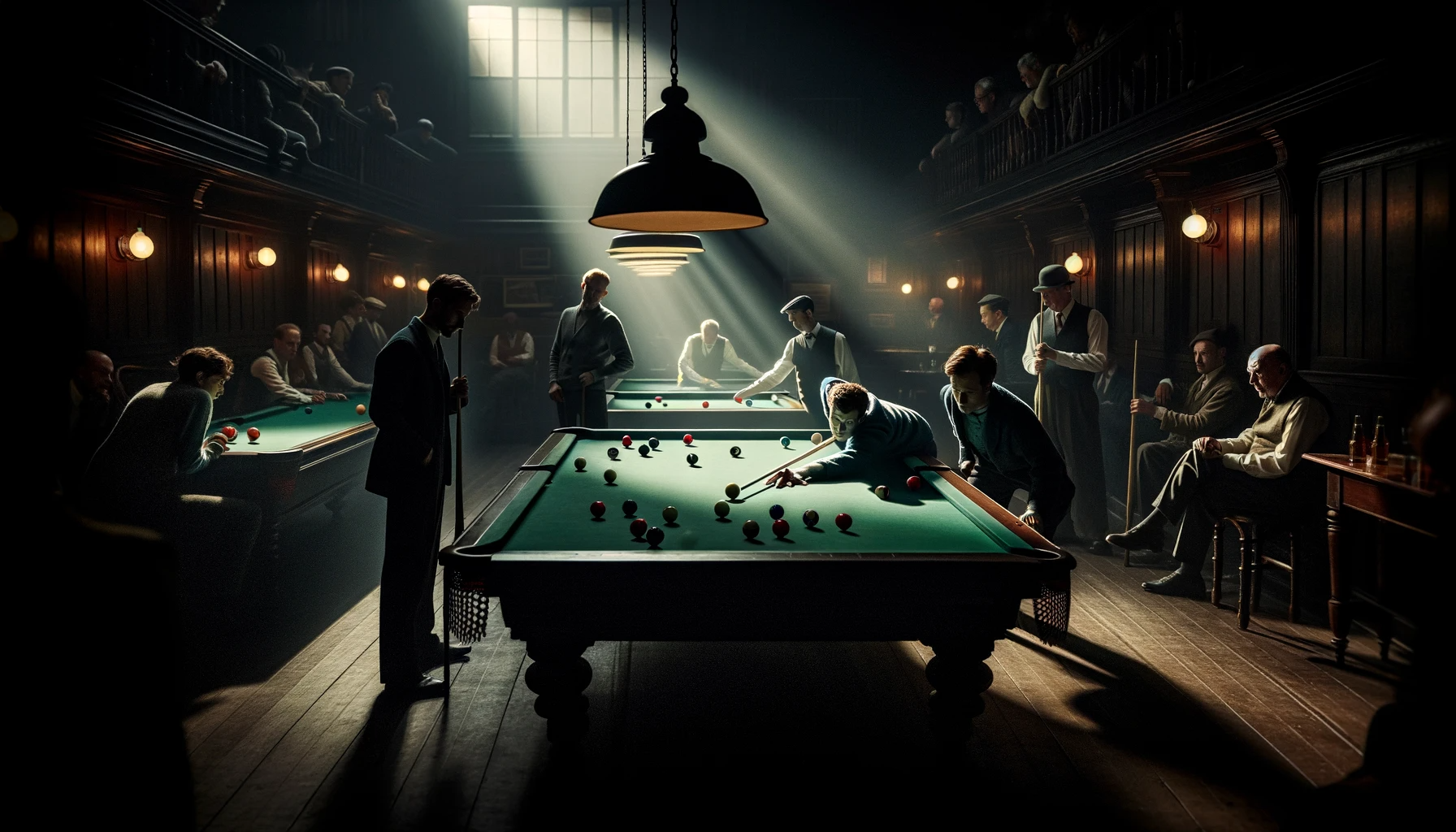Who Stole The Pockets?!

Sherman, set the Wayback machine to 1983, to a time when MTV ruled television. You're captured by the endless stream of music videos, falling into each one like that woman at the diner falling into the comic in the "Take On Me" video. In this case, though, it's Michael Jackson that takes you away. Imagine stepping into the gritty ambiance of a looming conflict between two rival gangs in Michael Jackson's iconic "Beat It" music video. It's Romeo's Montagues and Juliet's Capulets. It's the Jets and the Sharks.
As the two camps prepare for war, Michael rises from his bed and starts to wander, and dance, on his way to intercept the factions. The focus sharpens not just on Michael Jackson's energetic dance moves, but on something peculiar when he enters the pool hall. It's the pool tables; they have no pockets. No, seriously. Big old pool tables without pockets! What gives?
If you already know all about this, feel free to move on. To those who remain, watch the video below if you don't believe me.
See, big green tables with no pockets! Now that you've seen it with your own eyes, you believe me!
For many of us, myself included, a pool table is this big, overly expensive table with a green velvet covered top, six pockets, 15 coloured and numbered balls, as well as one white, aka "cue" ball. You hit the cue ball with a stick, called a cue, and do your best to knock the other balls into the pockets without knocking the cue ball in as well. Except, there are no pockets on the "Beat It" tables.
The presence of these weird tables likely isn’t a set designer’s oversight, but a deliberate choice. Some of you are probably already shouting at me, saying the difference is that one is "pool" while the other is "billiards." If so, please give me a moment. What I, and many others, think of as "pool" is also called "pocket billiards." The tables in the "Beat It" video are something different. These are carom billiards tables, a canvas for a cue sport distinct from the more commonly known (around these parts, at least) pool.
Carom billiards, unlike pool, eschews the pockets. Here, the table is a seamless expanse of green, bounded only by cushions. It's also a bigger table than the tradition pool table. The term "carom" in the context of billiards refers to a shot in which the cue ball contacts two other balls successively. This term is central to carom billiards, a cue sport where the objective is to score points by successfully making these contact shots, without the necessity of pocketing the balls. The skill in carom billiards lies in precisely controlling the cue ball to make these contacts, demonstrating a high level of accuracy and strategy.
In contrast, pool, or "pocket billiards," is what most os us are familiar with. Well, me anyhow. Here, the tables come equipped with pockets. Games like eight-ball or nine-ball have players sinking balls into these pockets following specific rules. Pool is a blend of precision, but also of power, a game where strategy intertwines with the deft handling of the cue stick.
Hmm... I wonder if the Sharks in "West Side Story" were any good at pool? I may need to rewatch the movie. But, I digress...
The choice of carom billiards tables in the "Beat It" video is intriguing. Was it an aesthetic choice, favoring the sleek, uninterrupted green for visual impact? Or perhaps a practical decision for filming, avoiding the interruption of balls dropping into pockets? It might even be a subtle nod to the diversity within cue sports, a celebration of skill in various forms. Who the hell knows? Yeah, I could probably look it up. Tell you what... you look it up and leave a comment below if you find an answer.
Anyhow, this little detail in a legendary music video opens up a world of cue sports. Carom billiards, with its emphasis on skillful shot-making, contrasts sharply with the more widespread pool games. In the realm of billiards, these variations represent different cultures and histories. Carom billiards is popular in parts of Europe and Asia, echoing its historical roots and the refinement of cue sports. Pool, meanwhile, has a more widespread appeal, often associated with casual play in bars and gaming halls.
Hmm... now I've got "Ya got trouble" from "The Music Man" going through my head.
I know. I digressed again. Anyhow, the "Beat It" video, through this subtle inclusion of a carom table, not only entertains but educates. In my case, I discovered that there's more to billiards than the classic pocket pool table. Excuse me while I smack down my teenage who continues to hang out in the halls of my brain as he snickers at the mention of "pocket pool". I need to remind him that I'm a grownup now.
Movie and TV watchers around this big world of ours often spend a great deal of time taking popular shows apart, trying to figure out why a director, or writer, did this thing or that. Many of us work under the impression that nothing that shows up on screen is an accident. Why is the 14th circled on that calendar? There's a porcelain statue of a mouse on the shelf. It means something. Surely, it has to.
It's also possible that the director just took what was handy. Maybe the pool hall near the shoot had carom tables rather than pocket pool. Who knows? Still, it's fun to speculate. If I'm right, and none of the choices are accidents, then this detail (the carom tables) tells you a little about the layers of creativity and thought put into production design. Every element in a scene, even something as seemingly mundane as a pool table, carries meaning and intention. And it makes for great conversation.
If you can think of other cool details like this in other videos, that watchers might miss for its unusual nature, feel free to share.
Until next time...
